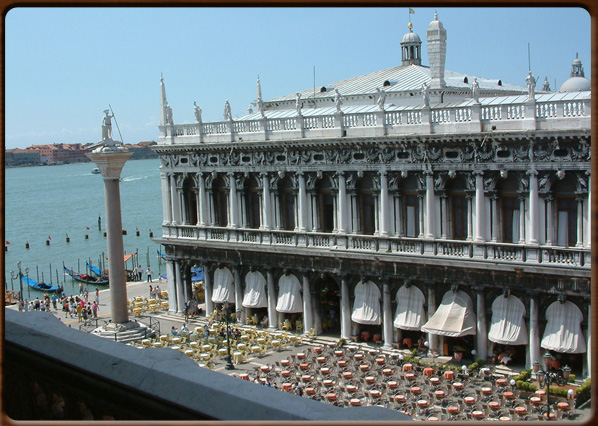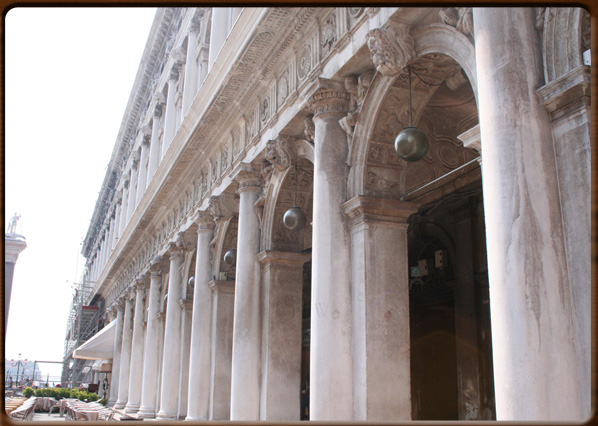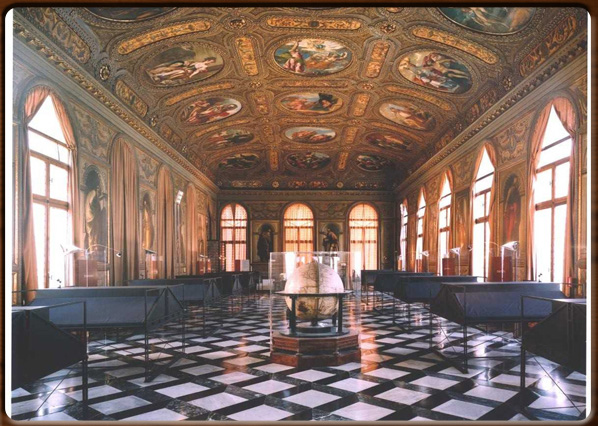
The Library seen from Palazzo Ducale.

The Library view from the below.

Vestibule of the Library. Tiziano, the Wisdom.

Room of the globe with frescoes.




No video
The Libreria is located in St. Mark’s Square, opposite the Doge’s Palace and was designed in 1537 by the Florentine architect Jacopo Tatti, also said Jacopo Sansovino, as the new seat for the Procurators.
Sansovino arrived in Venice in 1527 and soon became known for an unprecedented style, new to Venice. Indeed, the great architect Andrea Palladio in the late 1500s called the Libreria “the richest and most ornate building, that has perhaps ever been built since ancient times”.
In 1545, when work was already well underway, much of the building collapsed. Sansovino was thrown into prison and only managed to free himself through the influence of his friends, such as Tiziano and Pietro l’Aretino and upon payment of the full damage to the building.
The building was finally completed in 1582 by Vincenzo Scamozzi.
The Libreria has a large portico with a loggia on top and is surmounted by a long procession of statues depicting Greek gods. Today it houses the Biblioteca Marciana (S. Mark's National Library), one of Italy’s most important libraries: among its treasures is the “Grimani Breviary”, a code illuminated by Flemish artists of the 15th and 16th Centuries.
The great hall is decorated with gilded friezes and ceiling frescoes by Paolo Veronese. Among the paintings is a masterpiece by Titian, La Sapienza (1564) in the vestibule of the library.
The building also houses the Archaeological Museum.
1500 - S. MARCO - rev. 0.1.7